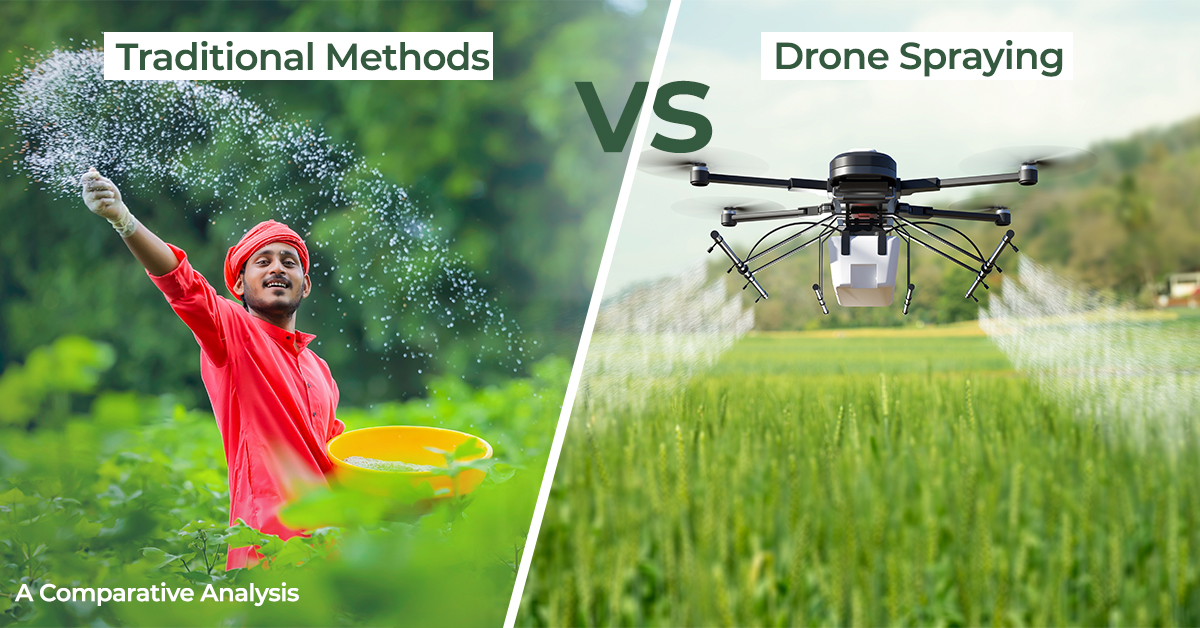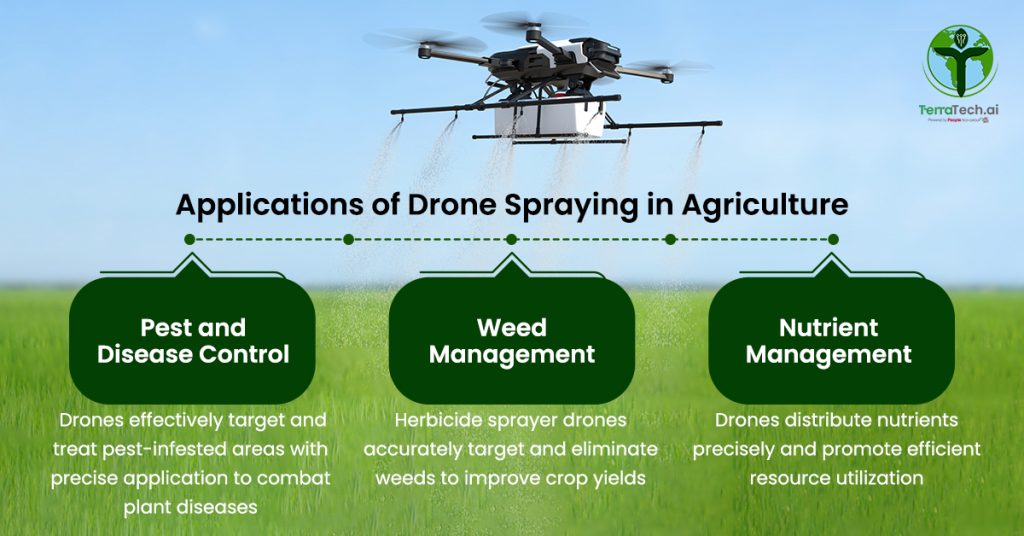Drone Spraying vs. Traditional Methods: A Comparative Analysis
Agriculture plays a vital role in sustaining our growing digital population. Efficient and effective crop spraying techniques are essential for maintaining crop health and maximizing yields. Recently, drone spraying has emerged as a promising alternative to traditional methods. This article offers a comparative analysis of drone spraying and traditional techniques.
Traditional Methods of Crop Spraying
Traditional methods, such as tractor-mounted and hand-held sprayers, have been the go-to option for crop spraying for decades. These methods offer familiarity and simplicity as they have long been employed in agriculture to protect crops from pests, diseases, and weeds.
While these methods have served as the foundation, they often need more consistent coverage, limited precision, and potential health and environmental risks. For example, overspray and drift can harm beneficial insects and pollinators, while chemical runoff can contaminate water sources.
Crop spraying is a crucial aspect of modern agriculture to maintain crop health and maximize yields. However, with the advancement of technology, drone spraying has emerged as a potential alternative to traditional methods.
Drone Spraying – Smart Farming Methods
In recent years, drone spraying in agriculture has emerged as a transformative technology, offering a more efficient and precise approach to crop protection. Drone spraying involves using unmanned aerial vehicles (UAVs) equipped with spraying systems to apply pesticides, fertilizers, and other agricultural inputs.
These UAVs, or drones, can be remotely controlled or operated autonomously using pre-programmed flight paths. They are equipped with tanks for holding the spraying solution and nozzles for dispersing the liquid over the crops. The technology allows for precise and targeted application, ensuring optimal coverage and resource utilization.
Exploring Different Types of Drones Used for Spraying and Their Price Range
Drone sprayers are rapidly gaining popularity due to their efficiency, precision, and cost-effectiveness. The drone sprayer price can range from 3.5 Lakhs to 11.5 Lakhs. Let’s understand the diverse landscape of drone sprayers.
- Fixed-Wing Drones are designed to resemble traditional airplanes, with fixed wings and a propeller-driven thrust system. These drones are known for their long-flight endurance and ability to cover large areas quickly. Fixed-wing drone sprayers are commonly used in vast agricultural fields and are suitable for spraying crops like wheat, corn, and soybeans.
- Multi-Rotor Drones, or quadcopters, are characterized by their ability to hover, take off vertically, and maneuver in tight spaces. These drones are versatile and used for precision agriculture, covering smaller areas with complex topography.
- Hybrid Drones combine the best features of fixed-wing and multi-rotor drones. These versatile UAVs can take off and land vertically like a multi-rotor drone while benefiting from the long-flight endurance of a fixed-wing drone. These drone sprayers offer increased flexibility and are suitable for large-scale and precision agriculture applications.
- Autonomous Drones have advanced software and sensors that allow them to operate without constant human intervention. These drones are programmed to follow pre-determined flight paths and execute spraying tasks accurately. Autonomous drone sprayers are ideal for repetitive spraying operations, and their use can significantly reduce labour costs and improve efficiency.
Comparative Analysis: Drone Spraying vs. Traditional Methods
Cost Effectiveness & Efficiency Comparison
Equipment Costs: Drone spraying requires an initial investment higher than traditional methods. However, the long-term savings can be significant due to reduced labour requirements and increased efficiency.
Labour Requirements: Agri spray drone eliminates the need for manual labour in the field, reducing labour costs. Traditional methods often require a team of operators to operate sprayers.
Time Savings: Drones offer faster spraying operations compared to traditional methods. They can cover larger areas in a shorter period, increasing efficiency and productivity.
Precision and Accuracy Comparision
Targeted Application: Drone spraying allows for precise and targeted application of pesticides and fertilizers. With GPS technology and advanced mapping software, drones can accurately identify specific areas needing treatment, minimizing wastage and optimizing resource utilization.
Reduced Drift and Off-target Effects: Traditional methods are prone to spray drift, which can result in the unintended deposition of chemicals on non-target areas. On the other hand, drones can maintain low-altitude flights and minimize the impact on neighbouring crops, beneficial insects, and the environment.
Environmental Impact Comparison
Reduction in Chemical Usage: Drone spraying enables precise application, reducing the overall amount of chemicals required. This targeted approach minimizes chemical runoff, potential groundwater contamination, and adverse effects on aquatic ecosystems.
Mitigation of Soil Compaction: Traditional heavy machinery methods can lead to soil compaction, affecting soil health and crop growth. Drone spraying eliminates the need for heavy machinery, reducing the risk of compression and preserving soil structure.
Impact on Beneficial Insects and Pollinators: Traditional methods may unintentionally harm beneficial insects and pollinators due to spray drift and non-target application. Drone spraying’s targeted approach minimizes unintended impacts, promotes biodiversity, and preserves ecosystem balance.
Safety Considerations
Operator Safety: Drone spraying reduces the direct exposure of operators to potentially hazardous chemicals. Operators can control the spraying process remotely, reducing the risk of inhalation or contact with the sprayed substances.
Public Safety: Drone spraying mitigates the risk of chemical drift affecting nearby communities. The targeted application and reduced drift minimize the exposure of surrounding areas and ensure public safety.
Scalability & Adaptability
Coverage of Large Areas: Drones efficiently cover vast areas, making them suitable for large-scale farming operations. Their ability to fly over fields quickly allows for an effective range of extensive agricultural lands.
Terrain and Crop Variability: Drones can navigate diverse landscapes and adapt to different crop types. They can access hard-to-reach areas, such as steep slopes or uneven terrains.
Conclusion
Drone spraying in agriculture is one of the most valuable tools, offering increased efficiency, reduced costs, and precise spraying capabilities. The future of drone spraying holds immense promise for revolutionizing agricultural practices. Drone spraying has the potential to contribute to sustainable agriculture by optimizing resource usage, minimizing environmental impact, and improving crop health and productivity.


